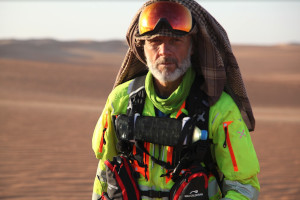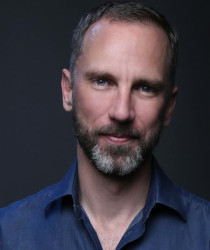Posted by Elena del Valle on September 30, 2021
Towson University (TU) has partnered with WittKieffer to conduct the search for the Vice President (VP) of University Marketing and Communications. TU is Maryland’s university of opportunities and known as a leader in academic excellence, research, and discovery. As the chief marketing and communications officer, the VP will advance the- Click to read the entire Job Ad for Vice President of University Marketing and Communications
Posted by Elena del Valle on September 29, 2021

Delicious
Photos: Princeton University Press
Do humans and other animals prefer to eat foods that taste good when they have a choice? Rob Dunn, a professor of applied ecology at North Carolina State University, and Monica Sanchez, a medical anthropologist, think so. In Delicious The Evolution of Flavor and How It Made Us Human (Princeton University Press, $27.95) they explore the history of man, our ancestors and fellow primates and its relationship to flavor.
The authors, speaking in a single voice in the book, believe taste receptors have driven animals and humans toward their needs and kept them away from dangers such as poisonous plants and rotten foods. Flavor preferences may have driven the development of tools and the choice of foods that prompted evolutionary changes, they propose. Aromas sensed in the mouth by primates and humans may have been especially important in the evolution of our kind, they believe.

Rob Dunn and Monica Sanchez, authors, Delicious
Some of those flavor preferences may have driven humans and neanderthals to hunt mega fauna to extinction. They also discuss the consumption of fruit, spices, meats and grains by our ancestors and their possible reliance on their noses and mouths in their choices and creation of spiced dishes and fermented foods. They delve into issues such as aroma, taste and mouthfeel and how they might have led to the development of popular foods such as curry, stinky tofus and cheeses.
In their book Dunn and Sanchez often refer to and quote the work of French lawyer Jean Anthelme Brillat-Savarin, famous for his love of food, dating back to 1825. The 279-page hardcover book published this year is divided into nine chapters: Tongue-Tied, The Flavor Seekers, A Nose For Flavor, Culinary Extinction, Forbidden Fruits, On the Origin of the Spices, Cheese Horse and Sour Beer, The Art of Cheese, and Dinner Makes Us Human.
According to their book biographies Dunn is in the Center for Evolutionary Hologenomics at the University of Copenhagen. Sanchez studies “the cultural aspects of health and well-being.” They live in North Carolina.
Comments:
Filed Under: Books
Posted by Elena del Valle on September 15, 2021
Overview of the Opportunity
The Director of Communications will lead all external communications, foster brand alignment, and deliver high-quality, on-brand, and timely work. We are seeking a seasoned & strategic communications professional with demonstrated success in thought leadership, content development, brand strategy, project management, and relationship building. Our ideal candidate – Click to read the entire Job Ad for Director of Communications, Education First
Posted by Elena del Valle on September 15, 2021

Max Calderan in The Lost Desert
Photos: Empty Quarter Studio
The Lost Desert, Empty Quarter Studio’s first feature length documentary, was acquired by STX and released last month on ad supported TubiTV.com. Most of the story takes place in Saudi Arabia’s Rub’ al Khali desert, where Max Calderan, an Italian extreme athlete, sets out to fulfill his lifelong dream: to walk 700 miles from west to east in an inhospitable uninhabited terrain.
An all male on the ground support team follows him in a caravan of vehicles, monitoring his well-being and filming. From idea to release the 83-minute film required four years of work. The company founders funded the project’s $1.2 million costs, hoping the film will appeal “to anyone who has big dreams and goes to any length to accomplish them. It will appeal to the elite sports athletes and fans, as well as people interested in natural history, science, culture and travel.”
“I met Max Calderan in 2016 and was immediately taken by his charisma, passion, and mission to accomplish his lifelong dream,” said Billy Sprague, president, Empty Quarter Studios, in a press release for the documentary. “I wanted to tell Max’s story and document his last, greatest challenge – to cross the largest sand desert in the world. I’m very proud of our film crew, who captured this inspiring story in one of the world’s harshest, deadliest, and most remote deserts. This is an inspiring story about a man pursuing his lifelong dream. It’s a story about perseverance and passion. And it’s a story about one of the least traveled to, most inhospitable places on earth.”
Described as having spent years crossing deserts on foot Calderan, a driven self-effacing athlete in his fifties, braved punishing heat (averaging 117 degrees Fahrenheit, according to promotional materials), shifting sand dunes of up to 1,000 feet as well as “poisonous snakes, spiders, scorpions, and any number of life-threatening challenges” in the making of the documentary. According to promotional materials, among Calderan’s eleven world records in desert exploration, he has run 90 hours straight without stopping in Oman. He also once ran 225 miles in 75 hours across a Saudi Arabian desert in summer.

Billy Sprague, president, Empty Quarter Studios
When asked about the greatest challenge the film presented Sprague said, “Transporting our crew and thousands of pounds of equipment and life-sustaining supplies in one of the most remote, dangerous, completely off-grid locations.” The greatest reward? “Successfully capturing the story and wrapping production in one of the most remote, dangerous, completely off-grid locations.”
The documentary was directed by Christopher Cassel. Michael Haertlein (Jane Goodall: The Hope) was director of photography, Marcelino Belizario (Bad Suns) handled Aerial Cinematography, Adriano Bravo (Human Weapon) was sound recordist, Benjamin Frank was assistant camera operator, and Rosie Walunas (But It Doesn’t Have Me) was editor.
Empty Quarter Studios, a New York and London based film and television production company, creates original non-fiction content “using moving images to tell epic, immersive and transformational stories borne out of exploration, travel, history, science and everyday life in the world’s most exotic and unreachable places” for global distribution.
Tubi, a division of Fox Entertainment, is an “ad-supported video-on-demand service with over 30,000 movies and TV shows, 65+ local and live news channels, and 250+ entertainment partners.” Stxfilms is a five year old division of Eros Stx Global Corporation, which “produces, acquires, distributes, and markets motion pictures at scale.”
Posted by Elena del Valle on September 1, 2021

A lab grown 1.21 carat, D color, VVS2 Keystar Gems manufactured diamond
Photos: Keystar Gems
There may be good news for anyone in the market for discount lab grown diamonds. Wholesaler Keystar Gems has begun selling their products in the United States. The company buys lab diamond rough grown in China has it cut in Surat, India and sells it for one quarter less than the wholesale price of natural diamonds of similar cut, clarity and color, according to a company spokesperson. The company plans to attend a trade only wholesale event in Las Vegas, Nevada for the first time this year.
When asked about the company’s primary target audience Aagna S. Ajmera, chief marketing officer, Keystar Gems, said by email via a New York publicist, “Ultimately Keystar Gems would love for everyone to own lab-cultivated diamonds, but as far as the company’s direct clientele, Keystar Gems is B2B, selling within the trade to jewelry design ateliers, large retailers, distributors, dealers, and to other lab-grown manufacturers.”

Aagna S. Ajmera, chief marketing officer, Keystar Gems
“On average it takes about 7-10 business days to go from rough to polish during the manufacturing process, which is very fast within the gem trade, and differentiates Keystar Gems from other lab grown manufacturers,” Ajmera said when asked what differentiates Keystar Gems from other lab grown diamond sellers. “This is entirely due to the expertise of Maheshbhai Radadiya, the Founder of Keystar Gems, who still personally studies every new rough diamond, along with the handling team, which has been trained by him. Keystar Gems is also known for having exceptional cutting, polish and symmetry, another distinguishing factor.”
“The colored diamonds are all custom orders,” said Ajmera when asked about color diamonds. “For Keystar Gems, the majority of the demand is for white diamonds.
An additional color treatment is required for most desired colors. Blue diamonds, however, don’t require a treatment. Colored diamonds need to be processed, so it isn’t more difficult to make them per say, it just takes more time to make a colored diamond.”
According to promotional materials provided by the company’s public relations agency, Keystar Gems is producing over 10,000 carats of High-Pressure High-Temperature (HPHT) lab grown diamonds a month. The diamonds range from 0.03 to 10 carats in size and are available in a variety of shapes and clarities. The company manufactures white, pink, blue and yellow manmade diamonds.
Although natural diamonds can take millions to billions of years to form, an HPHT diamond can be grown in under a week, according to information the agency provided. A company representative explained that “this kind of quantity is seen with Chemical Vapour Deposition (CVD) diamonds, but has not been seen before with HPHT.” The Surat-based company is owned by Radadiya, founder, and Shivang S. Rao, cofounder and director.
















